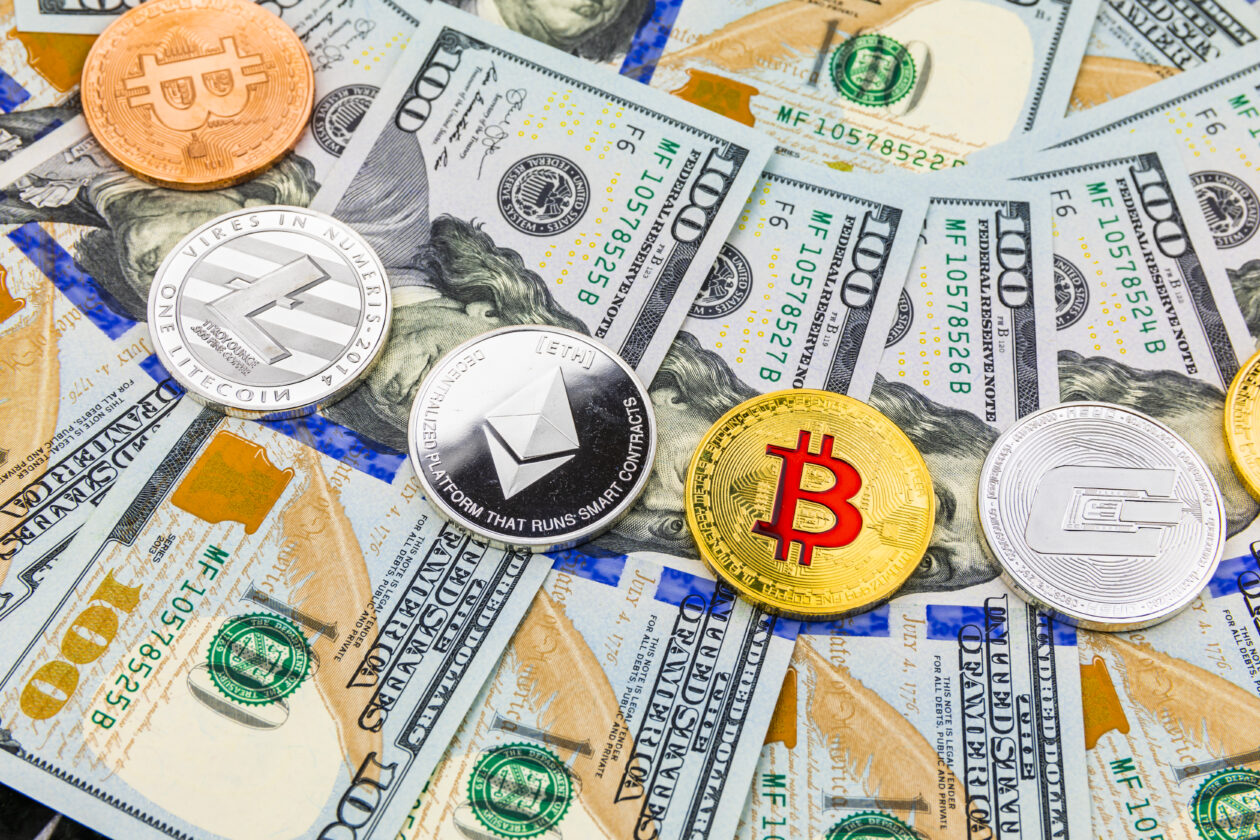Bitcoin fell below US$26,000 in Friday afternoon trade in Asia, along with all other top 10 cryptocurrencies, except Toncoin and Tron. The Wednesday rally in crypto prices was short-lived after the U.S. Securities and Exchange Commission’s (SEC’s) announcement on Thursday that it will delay seven spot Bitcoin exchange traded fund (ETF) applications until October.
See related article: Uniswap securities violation charges dismissed by US court
Mounting pressure on SEC to approve an ETF?
Bitcoin lost 4.69% to US$25,977 in 24 hours to 4 p.m. in Hong Kong, but inched up 0.04% on the week following a Wednesday rally in prices on the back of a favorable U.S. court ruling for Grayscale Investments in its Bitcoin ETF case against the SEC.
Bitcoin prices fell along with other cryptocurrencies after the SEC said on Thursday it will delay seven spot Bitcoin exchange traded fund applications until October. Some of the world’s largest asset managers including BlackRock, are waiting for SEC’s approval for their ETF applications.
“With high-profile applicants, such as Blackrock, the pressure is building for the SEC to approve an ETF. We believe several Bitcoin ETFs would be approved at once, which could still bring Bitcoin prices materially higher into year-end,” said Markus Thielen, head of research & strategy at digital asset service platform Matrixport, in an emailed note.
“While we estimated that the market was pricing in a 60% chance that Grayscale would receive the approval to convert their Bitcoin Trust into an ETF, those chances now appear even greater, at around 75%, and slowly edging closer to 100%,” Thielen added.
According to Gracy Chen, managing director of crypto exchange Bitget, investors are maintaining a positive outlook on Bitcoin’s medium-term prospects ahead of Bitcoin halving – expected in April next year – and ETF approvals. “Grayscale’s victory against SEC has also instilled confidence that regulators listen to market players,” Chen told Forkast in an email.
“The last few weeks’ events have shown that investors need to quickly understand and digest the constant news flow and make decisions decisively. Buy and hold might no longer be the appropriate strategy for investors who want to generate the highest returns. Instead, investors must have one finger at the pulse of the crypto market and understand bottom-up analysis,” Thielen of Matrixport added.
Ether, world’s second largest cryptocurrency, fell 3.49% to US$1,645.63, bringing its weekly losses to 0.29%, according to CoinMarketCap data.
Most other top 10 non-stablecoin cryptos posted losses, with Solana’s SOL leading the losers. It declined 4.77% to US$19.79, bringing its weekly losses to 3.77%. On Monday, Clockwork — a Solana-based automation network for smart contracts — shut down, with founder Nick Garfield said he saw “limited commercial upside” in the project.
“Altcoin prices will correlate with Bitcoin, but there are no strong indicators for significant growth in the near term. Moreover, specific issues in projects like Solana could further hinder their growth,” Chen of Bitget said.
TonCoin and Tron were the only gainers among top 10 cryptos. Toncoin, the native token of proof-of-stake blockchain TON, rose 2.07% to US$1.72% in the past 24 hours and 21.85% on the week. Tron gained 1.38% to US$0.07716 in 24 hours, and posted a weekly gain of 0.79%.
Total crypto market capitalization dropped 3.65% to US$1.05 trillion, while market volume rose 32.18% to US$38.08 billion.
NFT indexes fall
The Forkast 500 NFT index fell 0.24% to 2,202.91 in 24 hours to 6.30 p.m. in Hong Kong, bringing its weekly losses to 3%. At the same time, Forkast’s Ethereum, Solana and Polygon indexes were all down.
Total NFT sales dropped 16.03% to US$11.48 million, according to CryptoSlam data. NFT transactions declined 7.46% to 273,550, while the number of NFT buyers dropped 0.44% to 55,356 in the past 24 hours.
Among blockchains, Ethereum topped rankings although its sales volume dropped 20.87% to US$6.34 million. Solana and Mythos networks ranked second and third respectively, both gaining over 25% in sales volume in the past 24 hours.
Among collections, Mythos-based DMarket topped rankings by sales volume, rising 29.06% to US$1.02 million.
Earlier this week, the SEC charged Los Angeles-based media company Impact Theory on Monday with offering and selling its “Founder’s Keys” NFTs as unregistered securities.
“This is not in any way connected to the overall NFT market, as such a situation could occur with any category of products, stocks, or coins. I don’t believe this incident will impact the fate of NFT tokens,” Chen of Bitget said.
Asian equities, U.S stock futures gain; European bourses mixed

Most Asian markets rose on the first trading day of September. China’s Shanghai Composite and Shenzhen Component Index, South Korea’s Kospi, and Japan’s Nikkei 225 gained.
Private research firm Caixin’s China general manufacturing PMI showed on Friday that factory activity in the world’s second largest economy expanded at the strongest pace in August since February. The index rose to 51 in August from 49.2 in July, beating market expectations of 49.3.
China has announced several measures to boost the economy as it grapples with a slower-than-expected recovery post-Covid. The People’s Bank of China, the country’s central bank, said on Friday it will reduce the amount of foreign exchange that financial institutions are required to hold as reserves by 200 basis points to 4% from 6%.
“China is an economy which is not really one to be written off,” Amitendu Palit, senior research fellow, Institute of South Asian Studies at the National University of Singapore, told Forkast in an interview.
“The Chinese economy will take time to come back to its own way of functioning, and that’s largely because of the contraction that it suffered during Covid, much of which was self-imposed. But it’s going to take a real hard amount of time to come out of that,” Palit said.
U.S. stock futures gained as of 7.30 p.m. in Hong Kong on Friday. The Dow Jones Industrial Average futures, the S&P 500 futures, and the Nasdaq 100 Futures were all in the green.
Thursday’s release of the Personal Consumption Expenditures Price Index for July showed that U.S. consumer spending grew by the biggest margin in six months. However, other economic indicators point to a slowing of the economy, with some experts predicting a halt to interest rate hikes by the U.S. Federal Reserve in September.
The Fed raised its interest rate to between 5.25% and 5.5% in July, the highest in 22 years. The CME FedWatch Tool predicts an 88% chance that the central bank will maintain the current rate at the next meeting in September, up from 81% a week ago.
“Till the time the Ukraine conflict is resolved, the character of the interest rates that we are seeing globally is unlikely to change because the United States is going to stay focused on a policy which results in high internal yield. So the interest rates are going to remain high,” Palit pointed out.
India, the world’s most populous nation, posted a gross domestic product (GDP) growth of 7.8% in the first quarter of the current fiscal year that started on April 1, compared to a 6.1% growth in the previous January to March quarter. Fitch Ratings agency in June raised its forecast for Indian economic growth to 6.3% for the current fiscal year, from the 6% it had projected earlier. But rising food inflation and a global economic slowdown may continue to cast a pall over capital markets.
India’s benchmark index Sensex rose 0.86% at the close of trading hours on Friday.
“India probably is the one whose prospects are looking brightest at this point in time,” Palit said.
“India continues to remain, very oddly enough, an economy which is seen as an economy where the long term rates of return in the foreseeable future will remain reasonably good and stable. Now, this is something which not many economies of the world, at least among emerging markets, are in a position to offer to investors right now,” he added.
European bourses were mixed on Friday. The benchmark STOXX 600 rose while Germany’s DAX 40 dipped during afternoon trading hours in Europe. Investors are looking forward to the U.S. nonfarm payrolls report later on Friday, which is expected to provide insights into the Federal Reserve’s monetary policy and direction of the economy.
(updates with equities section.)






